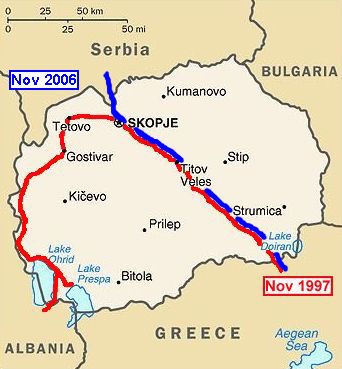
Why has my visa application taken so long to process?
Processing times are not available for all visa subclasses. Due to COVID-19, some visa processing times have been affected and applications may take longer to finalise. Processing times are not available for all visa subclasses. For more information on travel restrictions and visa information, visit the Home Affairs’ COVID website .
How many visas does the US give out each year?
The U.S. Department of State (DOS) is the agency that allocates immigrant visas. In general, family-sponsored preference visas are limited to 226,000 visas per year and employment-based preference visas are limited to 140,000 visas per year.
When does the new fiscal year start for visas?
When the new fiscal year begins on Oct. 1, a new supply of visa numbers becomes available. Usually, but not always, the new supply returns the cut-off dates to where they were before retrogression.

Are U.S. visas being processed now?
U.S. embassies and consulates are working to resume routine visa services on a location-by-location basis as expeditiously as possible in a safe manner. However, the pandemic continues to severely impact the number of visas our embassies and consulates abroad are able to process.
How long are visas taking right now?
It takes from 3 to 5 weeks for a US visa application to get processed. After the processing, the applicant can get a positive reply on their application, and the consulate will deliver the document. The delivery of the visa can take up to two other workdays.
Is the NVC still processing visas?
On June 1, 2020, National Visa Center will no longer accept or respond to inquiries through mail. National Visa Center has modernized the way we pre-process visa applications. This has allowed NVC to streamline services to case parties and to U.S. Embassies and Consulates.
Is NVC scheduling interviews for 2022?
While in May 2022, NVC reported 421,136 eligible immigrant visa applicants still pending the scheduling of an interview after May 2022 appointment scheduling was completed, resulting in a growing backlog of 5,350 immigrant visa cases in June.
Will USCIS speed up 2022?
USCIS Extends Premium-Processing to Certain Pending Immigrant Petitions. On May 24, 2022, U.S. Citizenship and Immigration Services (USCIS) announced an expansion of premium processing service to two additional categories of Form I-140 immigrant petitions.
Why are visas taking so long?
We've established that visa wait times grow because there is a statutory limit on the number of green cards the government may issue each year. But there's more. In addition to that, U.S. immigration law says no more than seven percent of all immigrant visas can be given to people of one country in a given year.
How long does NVC take to schedule for interview 2022?
How long does it take to get an appointment? Although NVC strives to schedule appointments within three months of NVC's acceptance of all requested documentation, this timeframe is subject to the operating status and capacity of the consular section.
How long does it take for NVC to review documents 2022?
It frequently takes the NVC at least two months to review one's documents.
How long does it take USCIS to schedule an interview 2022?
INTERVIEW. The citizenship interview usually takes place about 14.5 months, on average, after USCIS receives your naturalization application (sooner or later for some applicants).
How far behind is NVC?
A common question is “How long does the NVC take to review forms and documents?” After you've electronically submitted the visa application, fees, and all supporting documents through CEAC, it can take from 2 weeks to 3 months for NVC to review.
How long wait for visa interview appointment?
These are currently around 2-4 weeks until the actual visa receipt after sending the documents to the U.S. consulate. With the increasing access rate to this procedure, longer waiting times are also foreseeable here.
What month is NVC working on?
The NVC is currently working on cases that were received from USCIS on or before April 13, 2022. The NVC creates visa cases by entering petition data into the system.
Why is USCIS taking so long to process 2022?
The reasons for these delays are twofold: (1) the COVID19 pandemic impacted the efficiency and productivity of USCIS and all government functions, including mail delivery, and (2) the Trump Administration delayed processing of visa petitions as a way to reduce the number of legal immigrants entering the United States.
How long does it take to get a fiance visa 2022?
approximately 9 to 12 monthsAs of March 2022, K-1 visa processing took approximately 9 to 12 months (USCIS time to process Form I-129F). Click here to see exact ranges based on your service center. In addition to that, it takes between three to four weeks to receive notice from the National Visa Center with further instructions.
How long does it take NVC to schedule interview 2022?
How long does it take to get an appointment? Although NVC strives to schedule appointments within three months of NVC's acceptance of all requested documentation, this timeframe is subject to the operating status and capacity of the consular section.
How long does it take to bring spouse to USA 2022?
Average time -- Five to 14.5 months (as of early 2022) for approval of the Form I-130, and additional time depending on individual circumstances. Summary of the Process -- The U.S. citizen starts the process by filing a Form I-130 with USCIS, either online or by mail.
When is a visa available?
A visa is available to you when your priority date is earlier than the cut-off date shown for your preference category and country of chargeability in the applicable chart in the Visa Bulletin, as described above in the Acceptance of Adjustment of Status Applications section.
What is visa retrogression?
Sometimes, a priority date that is current one month will not be current the next month, or the cut-off date will move backward to an earlier date. This is called visa retrogression, which occurs when more people apply for a visa in a particular category than there are visas available for that month. Visa retrogression generally occurs when the annual limit for a category or country has been exhausted or is expected to run out soon. When the new fiscal year begins on Oct. 1, a new supply of visa numbers becomes available. Usually, but not always, the new supply returns the cut-off dates to where they were before retrogression.
What does U visa mean?
If the Visa Bulletin shows “U” in a category, this means that immigrant visas are temporarily unavailable to all applicants in that particular preference category and/or country of chargeability.
What is the DOS visa bulletin?
DOS, working with the Department of Homeland Security, revises the Visa Bulletin each month to estimate immigrant visa availability for prospective adjustment of status applicants. If DOS makes any changes to either chart in the Visa Bulletin after publishing it, we will review those changes and determine if any further action is necessary. Check the latest dates for filing adjustment of status applications .
Can I file an I-485 with an I-130?
In certain instances, you can file your Form I-485 together, or “concurrently,” with the underlying Form I-130 or Form I-140 immigrant petition. You may concurrently file your Form I-485 only when approval of the underlying immigrant petition would make a visa immediately available to you. If you are an immediate relative, you can always concurrently file your Form I-485 application with the underlying Form I-130.
Do you need a visa to become a permanent resident?
A visa must be available before you can take one of the final steps in the process of becoming a lawful permanent resident. Because more prospective immigrants want lawful permanent residency than the limited numbers of immigrant visas allow, not everyone can immediately get an immigrant visa.
Family visa processing priorities
We process family migration applications in processing priority order regardless of when an application is submitted and in line with the government’s policy priorities.
Skilled visa processing priorities
We process skilled visa applications in processing priority order regardless of when an application is lodged and in line with the government’s policy priorities.
Global processing times for visas
Processing times include applications submitted online and by paper. Where available, you should submit your application online as it helps streamline processing arrangements.
How to view processing times
You can view processing times on the page for specific visa subclasses.
How long does it take to get a visa interview?
Once you receive information about the upcoming visa interview, you will be asked to attend at a scheduled time. Typically, you can expect to wait for 2 to 8 weeks between when your visa interview appointment is scheduled and the time that you can attend the interview.
How long do you have to get a K-1 visa?
At this point, you have 6 months to enter the United States.
What is a K-1 visa?
A K-1 visa is a document that allows a foreign national to enter the United States expressly for the purpose of marrying a United States citizen. A K-1 visa does not provide permanent legal residence, although it does open up the ability to pursue such via an adjustment of status after marriage. Here is what you need to know about acquiring a K-1 visa and how long you can expect to wait during each step.
What is the first step to get a K-1 visa?
The first step that must be taken in order to acquire a K-1 visa is filing a Form I-129F. The foreign partner is not responsible for this form; instead, their US citizen partner will sponsor them and file the I-129 with USCIS.
How long does it take to get an I-129F in 2021?
As of 2021, Form I-129F forms are being processed slightly slower than average, at between 8 and 10 months.
Is There A Premium Process?
Many types of visas offer the ability to pay extra for premium processing, which guarantees that a petition will be reviewed within a few weeks of its arrival. Unfortunately, K-1 visas are not eligible for premium processing. However, the overall timeline, even in 2021, is not typically extremely long. This means that getting the information correct the first time is the best way to ensure that your K-1 visa is granted quickly.
